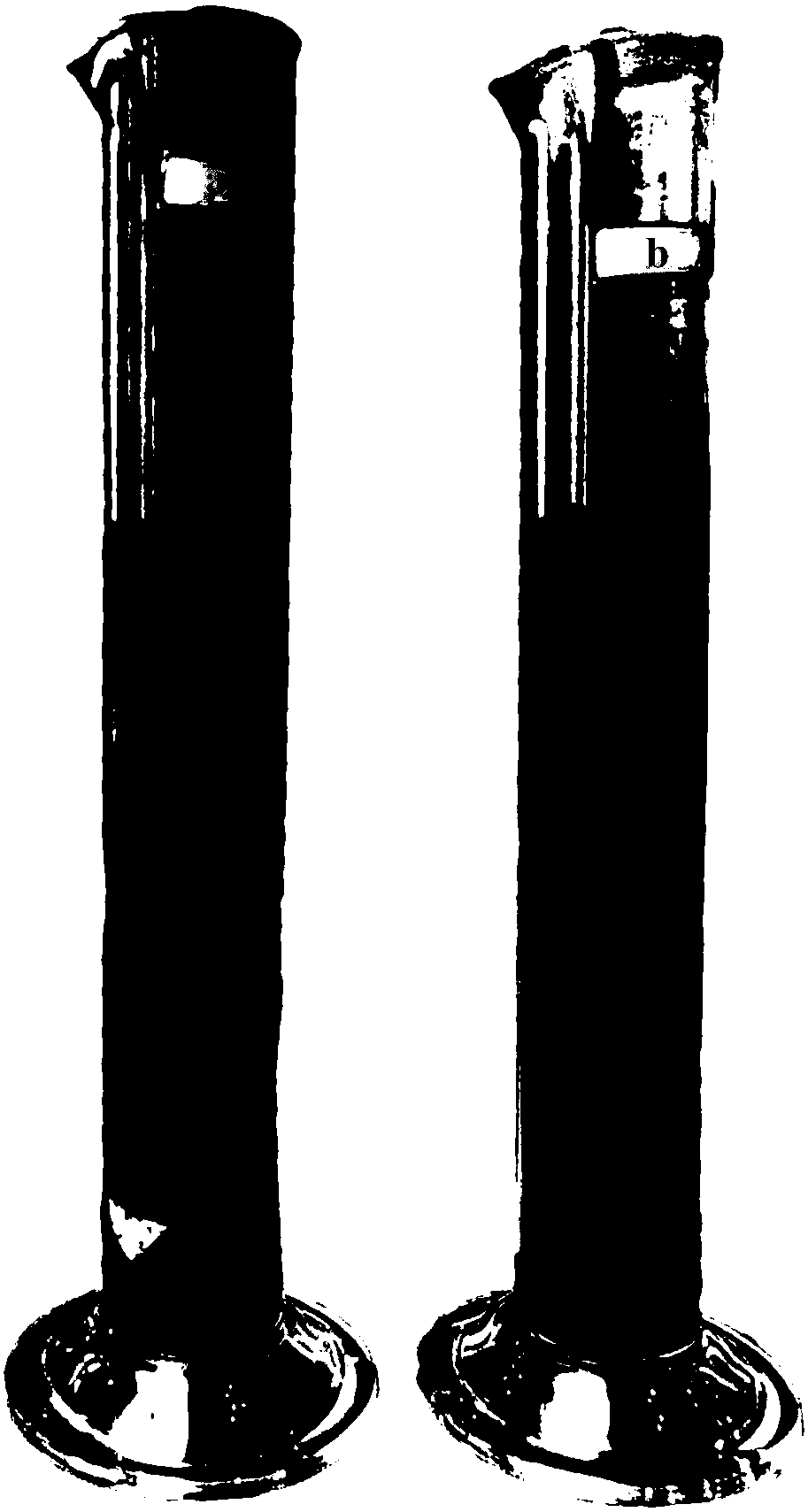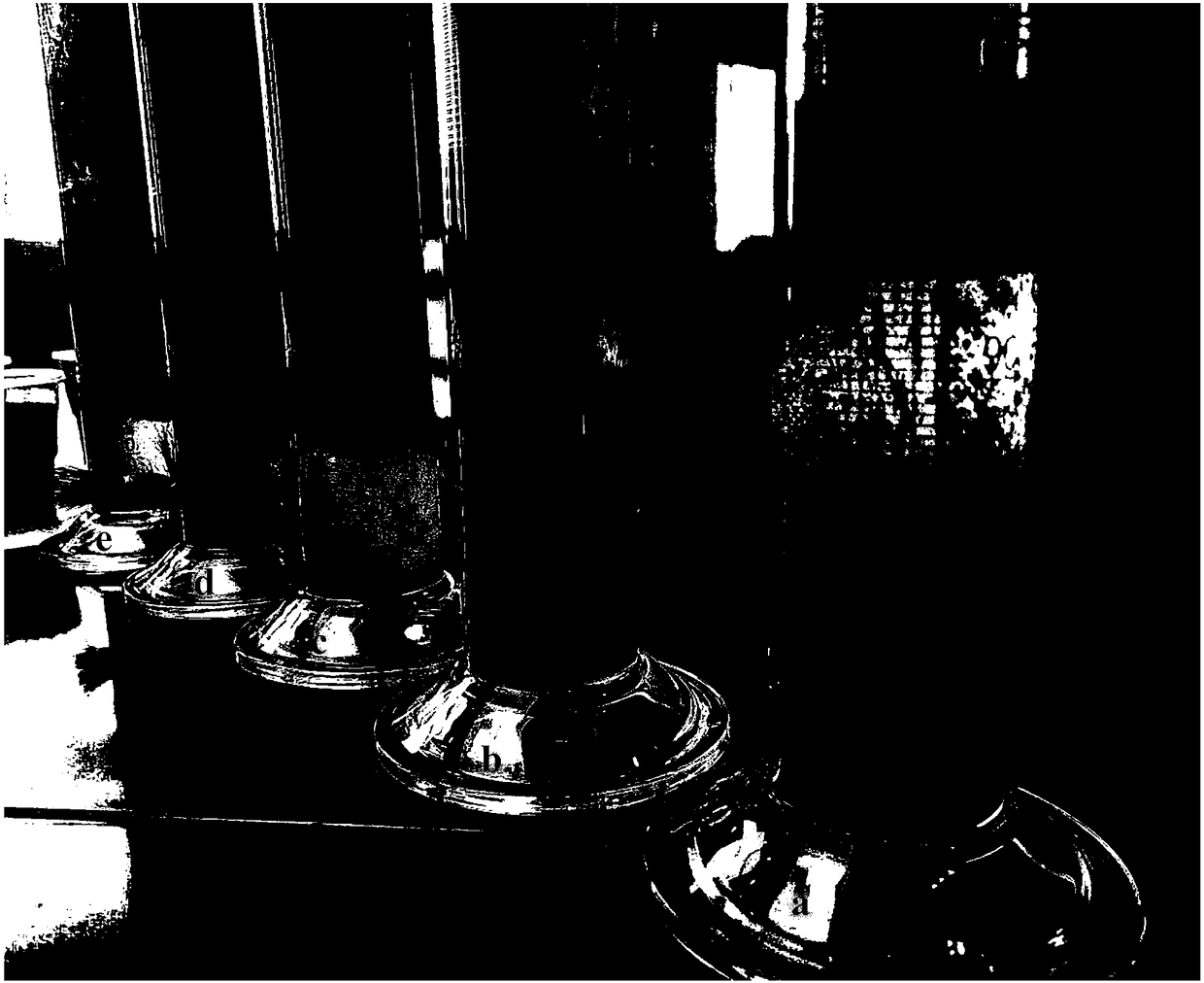Treatment method of oil-containing sludge
A treatment method and sludge technology, applied in the direction of dewatering/drying/concentrating sludge treatment, dewatering/demulsification by chemical methods, etc., to achieve the effects of good dewatering effect, strong flocculation and agglomeration ability, and low operating cost
- Summary
- Abstract
- Description
- Claims
- Application Information
AI Technical Summary
Problems solved by technology
Method used
Image
Examples
Embodiment 1
[0043]The oily sludge produced in the sewage treatment plant of the oil refinery mainly comes from the bottom sludge of the grease trap, the scum of the flotation tank, and the bottom sludge of the crude oil tank. The composition of these oily sludge is different, and the oil content is usually 10 % to 50%, the water content is between 40% and 90%, accompanied by a certain amount of solids; the selected demulsifiers are polyethylene polyamine block polyether demulsifiers, silicon-containing demulsifiers, and phenolic resin demulsifiers , polyphosphate demulsifier and polyaluminum chloride demulsifier; first, the oily sludge is passed into the separation tank for preliminary oil, water and slag separation; the separated waste oil is recovered, and the remaining mud and water mixture Drain to the demulsification tank, add demulsifier, add sulfuric acid, adjust the pH value to 2.5, and demulsify; Among them, polyethylene polyamine block polyether demulsifier, silicon-containing de...
Embodiment 2
[0046] For the oily sludge produced by crude oil extraction, this oily sludge generally has the characteristics of high oil content, high viscosity, fine particles, and difficult dehydration. The selected demulsifiers include silicon-containing demulsifiers, phenolic resin demulsifiers, and polyphosphate demulsifiers. Emulsions and polyaluminum chloride demulsifiers. First, the oily sludge is passed into the separation tank for preliminary separation of oil, water and slag; the separated waste oil is recovered, and the remaining mixture of mud and water is discharged to the demulsification tank, where demulsifier is added, and then sulfuric acid is added to adjust The pH value is 3.0, and demulsification is carried out; wherein, the mass ratio of silicon-containing demulsifier, phenolic resin demulsifier, polyphosphate demulsifier and polyaluminum chloride demulsifier is 1:1:3:2, and the demulsifier addition is The sludge weight is 1‰, the reaction temperature is 65°C, and the...
Embodiment 3
[0049] For the oily sludge produced in the oilfield gathering and transportation process, this oil contains mechanical impurities, sand, soil, heavy metal salts, and heavy oily components such as paraffin and asphaltene, which are deposited on the bottom of the oil tank to form sludge at the bottom of the tank. Select Typical demulsifiers include phenolic resin demulsifiers, alkylphenol polyoxyethylene ethers, polyphosphate demulsifiers and polyaluminum chloride demulsifiers. First, the oily sludge is passed into the separation tank for preliminary separation of oil, water and slag; the separated waste oil is recovered, and the remaining mixture of mud and water is discharged to the demulsification tank, where demulsifier is added, and then nitric acid is added to adjust The pH value is 1.5, and demulsification is carried out; wherein, the mass ratio of phenolic resin demulsifier, alkylphenol polyoxyethylene ether, polyphosphate demulsifier and polyaluminum chloride demulsifier...
PUM
 Login to View More
Login to View More Abstract
Description
Claims
Application Information
 Login to View More
Login to View More - R&D
- Intellectual Property
- Life Sciences
- Materials
- Tech Scout
- Unparalleled Data Quality
- Higher Quality Content
- 60% Fewer Hallucinations
Browse by: Latest US Patents, China's latest patents, Technical Efficacy Thesaurus, Application Domain, Technology Topic, Popular Technical Reports.
© 2025 PatSnap. All rights reserved.Legal|Privacy policy|Modern Slavery Act Transparency Statement|Sitemap|About US| Contact US: help@patsnap.com



